Within the coronary heart of Athens, nestled inside the vibrant Plaka district, lies a website that has borne witness to the ebb and circulate of empires—the Roman Agora. Distinct from its extra well-known neighbor, the Historic Agora, this historic market is however a testomony to Athens’ richly layered historical past, the place Greek, Roman, Byzantine, and Ottoman influences converge.
Building of the Roman Agora started within the late 1st century BC, initiated by the Chief Justice of the Peace Eucles of Marathon and funded by the emperor Augustus (63 BC-14 AD). This civic mission fulfilled a promise made by Julius Caesar (100-44 BC) to the town of Athens in 51 BC, as an growth of the present business hub. Positioned on the north aspect of the hill of Acropolis, instantly to the east of the Historic Agora, this new market catered to the wants of a rising Athenian inhabitants, symbolizing the town’s evolution below Roman rule.
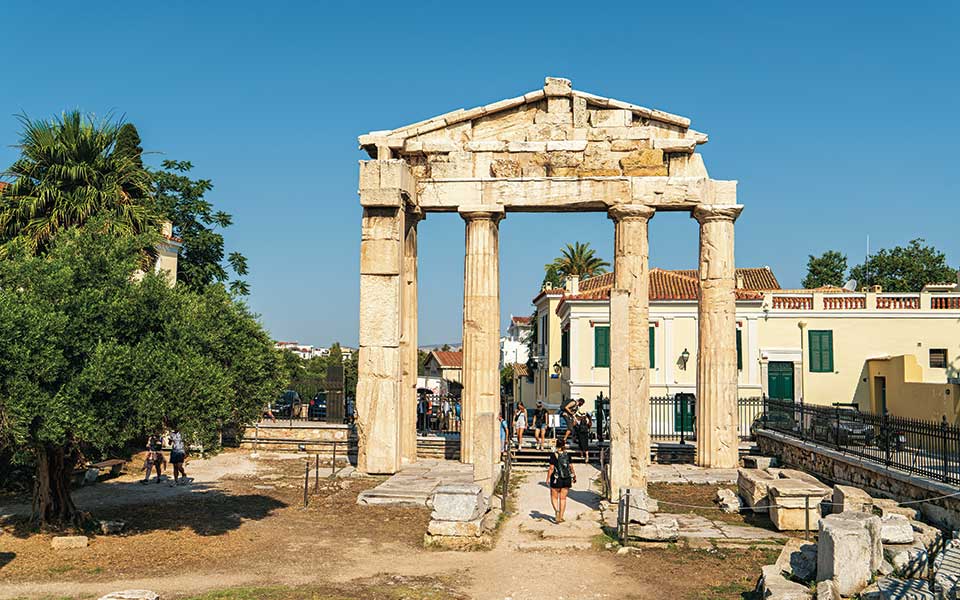
© Shutterstock
THE GATE OF ATHENA ARCHEGETIS
Our journey begins on the western entrance, the place the imposing Gate of Athena Archegetis (“Athena the Chief”) greets you. Constructed in 11 BC, this monumental gateway, with its 4 colossal Doric columns of Pentelic marble, resembles the façade of a grand temple. Devoted to Athena, the town’s patron goddess, it symbolizes the intertwining of Roman energy and Greek custom.
As you go via the gate, take a second to search for and admire the inscriptions carved into the marble entablature, positioned above the columns. Should you can learn Classical Greek, you may decipher the dedication that provides a glimpse into the historical past and individuals who first walked these steps over two thousand years in the past:
O ΔΗΜOΣ ΑΠO ΤΩΝ ΔOΘΕΙΣΩΝ ΔΩΡΕΩΝ ΥΠO ΓΑΙOΥ ΙOΥΛΙOΥ ΚΑΙΣΑΡOΣ ΘΕOΥ/ ΚΑΙ ΑΥΤOΚΡΑΤOΡOΣ ΘΕOΥ ΥΙOΥ ΣΕΒΑΣΤOΥ/ ΑΘΗΝΑ ΑΡΧΗΓΕΤΙΔΙ ΣΤΡΑΤΗΓOΥΝΤOΣ ΕΠΙ ΤOΥΣ OΠΛΙΤΑΣ ΕΥΚΛΕOΥΣ ΜΑΡΑΘΩΝΙOΥ/ ΤOΥ ΚΑΙ ΔΙΑΔΕΞΑΜΕΝOΥ ΤΗΝ ΕΠΙΜΕΛΕΙΑΝ ΥΠΕΡ ΤOΥ ΠΑΤΡOΣ ΗΡΩΔOΥ ΤOΥ ΚΑΙ ΠΡΕΣΒΕΥΣΑΝΤOΣ/ ΕΠΙ ΑΡΧOΝΤOΣ ΝΙΚΙOΥ ΤOΥ ΣΑΡΑΠΙΩΝOΣ ΑΘΜOΝΕΩΣ
“The Individuals of Athens, from the donations provided by Gaius Julius Caesar the God / And the Revered Emperor, son of God / To Athena Archegetis, on behalf of the troopers of Eucles of Marathon / Who curated it on behalf of his father Herod and who was additionally an envoy / Below the archon Nicias, son of Sarapion, from the demos of Athmonon.”
This inscription displays the civic pleasure of the Athenians and their reverence for Athena—a sentiment deeply embedded within the metropolis’s identification. As you step via the gateway, think about the bustling exercise that may have greeted you in historical instances: retailers hawking their wares, residents debating politics, and students exchanging concepts.
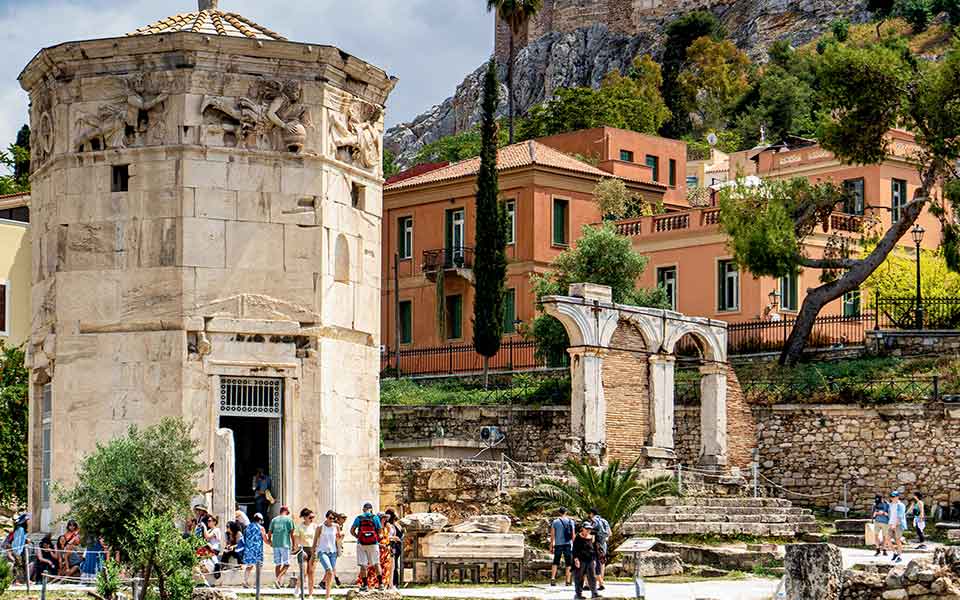
© Perikles Merakos
THE TOWER OF THE WINDS
Persevering with your exploration to the opposite finish of colonnade, you’ll arrive at one of the vital fascinating and enigmatic historical buildings in all of Athens—the Tower of the Winds, in any other case often called the Horologion of Andronikos. This octagonal marble tower, constructed by Macedonian architect and astronomer Andronicus of Kyrrhos someday between the top of the 2nd century and 1st century BC, was a technological marvel of its time. Think about a construction that served as a sundial, a water clock, and a weathervane multi function—that is precisely what the Tower of the Winds was.
Both sides of the tower is adorned with reliefs depicting the eight winds, personified as gods blowing over the town—Boreas (N), Kaikias (NE), Apeliotes (E), Eurus (SE), Notus (S), Livas (SW), Zephyrus (W), and Skiron (NW). These reliefs had been integral to the tower’s perform as a weathervane. In antiquity, a bronze statue of a Triton topped the tower, with a rod indicating the wind’s course.
Contained in the tower, time was measured by a classy water clock, fed by a stream from the Acropolis. The ground nonetheless bears traces of the channels and holes that after held the clock’s mechanism, a reminder of the ingenuity of the traditional Greeks. Standing right here, you may nearly hear the trickle of water and the murmur of historical Athenians consulting the tower to find out the time or the climate—a central characteristic of every day life within the Agora, particularly in relation to the comings and goings of service provider ships on the port of Piraeus.
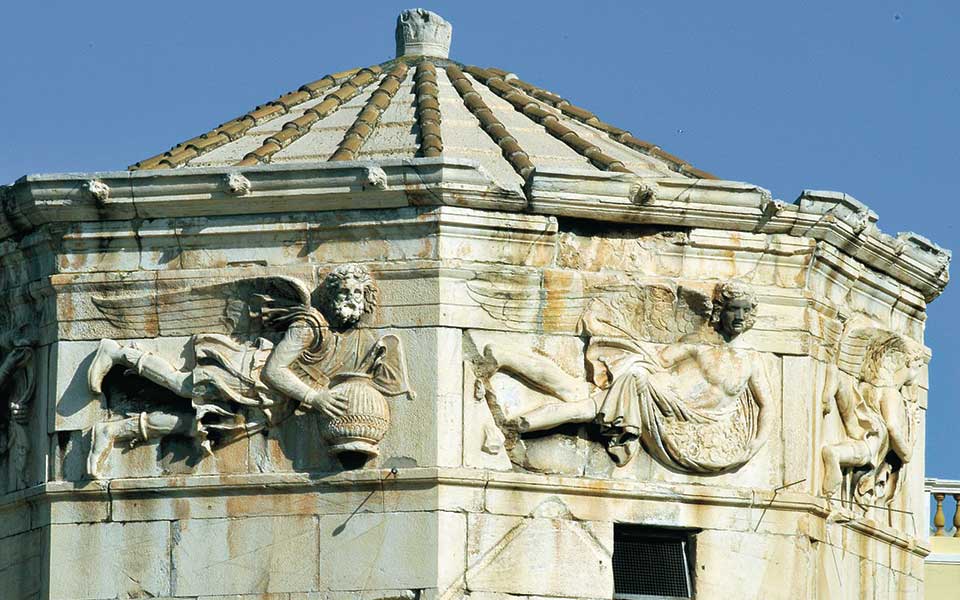
© Public doma
The tower’s significance prolonged past the Roman interval. Throughout the Ottoman period, it served as a “tekke,” a gathering place the place males would meet to smoke water pipes and have interaction in dialog. Within the 18th century, it grew to become an area assembly level for the Sufi fraternity of the Mevlevi Order, recognized for his or her “whirling dervishes.” The tower’s enduring attraction even impressed European artists and designers, captivated by its elegant design and historic resonance. Right this moment, it’s thought-about the oldest meteorological station on the earth.
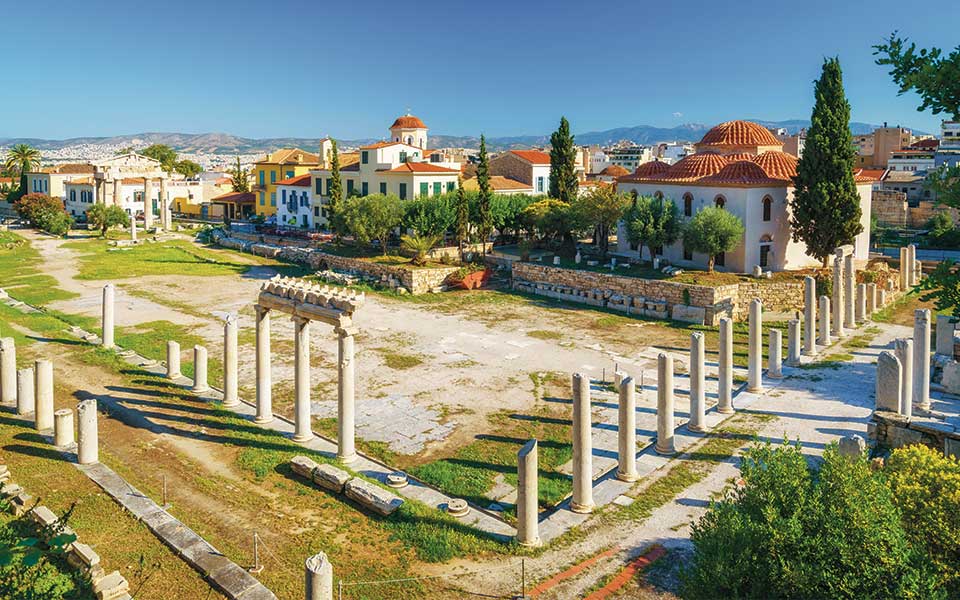
© Shutterstock
THE FETHIYE MOSQUE
As you proceed to the northern aspect of the Agora, you’ll encounter one other layer of Athens’ complicated historical past—the Fethiye Mosque, or the “Mosque of the Conquest.” Constructed within the late 1660s AD as a Sunni mosque, it stands on the location of a former Christian basilica, which was transformed right into a mosque in 1456 to honor the go to of Sultan Mehmed the Conqueror to Athens. This construction displays the town’s various non secular heritage. Later, through the Venetian occupation, the mosque was transformed right into a Catholic church. Following the Greek Warfare of Independence, it served numerous functions, together with as a faculty.
Right this moment, the mosque is used for storage, however plans by the Hellenic Ministry of Tradition purpose to revive it as a cultural heart or museum. Its easy but historic structure gives a quiet reminder of the town’s Ottoman previous (mid-Fifteenth century to 1821)—a interval that’s usually overshadowed by its historical and classical heritage. As you stand earlier than the mosque, contemplate the layers of historical past which have formed this metropolis, every period leaving its mark on the panorama.
HIDDEN TREASURES
Past these main landmarks, the Roman Agora is crammed with smaller, but equally fascinating, remnants of historical life. The positioning contains the stays of varied retailers, storerooms, and even public bathrooms—often called “vespasianae” (observe the benches with holes across the partitions and the sewage pipe beneath). These could seem mundane immediately, however they provide a glimpse into the every day lifetime of historical Athenians.
On the southern aspect of the Agora, you’ll discover the remnants of a “krene” (fountain-house) and three small edifices that in all probability served because the places of work of business authorities like “agoranomoi” or “metronomoi” (market officers and directors).
Some of the intriguing facets of the Roman Agora is that it was solely absolutely uncovered within the nineteenth and twentieth centuries. For hundreds of years, the location lay buried beneath layers of homes from the Byzantine and Ottoman durations. The excavation, which started in 1837 below the auspices of the Greek Archaeological Society and continued into the twentieth century, not solely revealed the traditional market but in addition highlighted the lack of newer historic buildings.
As you wander via the Agora, be aware of the completely different architectural types that coexist right here—Doric, Ionic, and Roman. This mix of influences displays Athens’ standing as a cultural crossroads, the place traditions from completely different eras and areas converged.
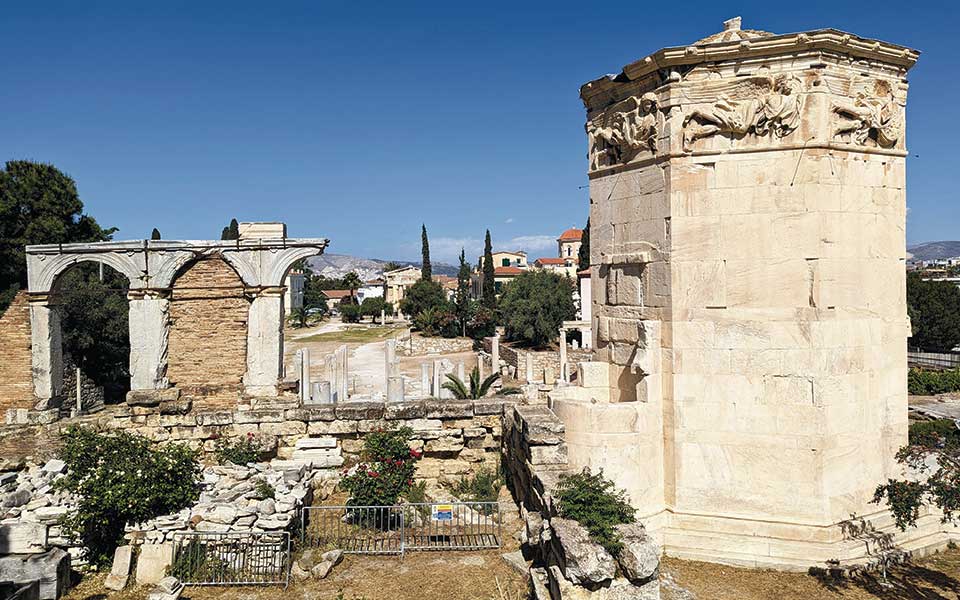
© Shutterstock
PRACTICAL INFORMATION
Getting There: The Roman Agora is conveniently positioned close to a number of key landmarks in Athens. Should you’re touring by metro, the closest stations are Monastiraki (Line 1) and Acropolis (Line 2). Each are a brief stroll from the location, making it straightforward to incorporate the Roman Agora in your exploration of central Athens.
Opening Hours and Admission Charges: The Roman Agora is open year-round, with hours various seasonally. From April 1st to August thirty first, it operates from 8:00 to twenty:00, and from September 1st to March thirty first, it stays open till 15:00 pm. Click here for extra details about opening instances in September and October.
Admission prices €8, with lowered charges accessible for sure teams, together with college students and seniors. Kids below 18 and EU college students get pleasure from free entry. Take into account buying the mixed ticket when you plan to go to a number of archaeological websites, together with the Acropolis, because it gives entry to a number of key areas over 4 days.

© Perikles Merakos
INSIDER TIPS
Discover Early or Late: To keep away from the noon crowds, go to the Roman Agora early within the morning or later within the afternoon. This not solely permits you to benefit from the website’s tranquility but in addition to expertise the historic ambiance with out distraction.
Mix Visits: The Roman Agora is a brief stroll from different important websites, reminiscent of the Historic Agora, Hadian’s Library, and the Acropolis. A mixed ticket not solely saves cash but in addition enriches your understanding of Athens’ historical panorama. For extra info on tickets, click here.
Comfy Footwear: The terrain inside the Agora may be uneven, so sturdy, comfy footwear are beneficial.
Keep Hydrated: Particularly through the summer season months, carry water with you, as the location gives restricted shade and facilities.



Recent Comments